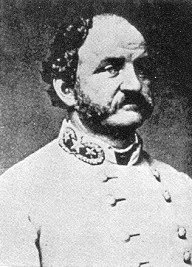Disclaimer
Here at Kentucky Tennessee Living, we strive to keep this site nonpolitical in nature. All historic events posted are those that changed the lives of future generations and have helped to give miners a voice in their working and living conditions. As well as we remember those who fought on both sides of the Civil War. All events posted are for the benefit of remembering who we are as the American Appalachian people.
The Civil War
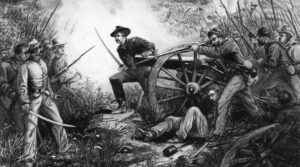
Between the years of April 12, 1861, and May 9, 1865, the War Between the States raged. The peace of the Appalachian Mountains was broken as brother took up arms against his brother. Several battles were won and lost the area of Letcher County and we will try to cover as many of them as possible.
Several of the Generals and other significant military men who went on later to hold major positions in US politics after the War. We will begin our journey into the Civil War with the life of Colonel John Stuart Williams who would be the first to capture Pound Gap.
The Battles for Pound Gap
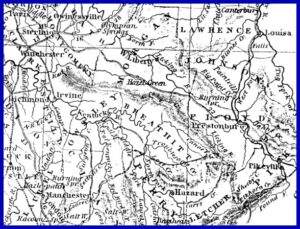
Pound Gap is located on the state line between Kentucky and Virginia. During the Civil War, the North and the South realized the importance of the road to the State of Virginia to move troops quickly into battle areas in Kentucky.
It was used as a thoroughfare for moving troops between Central and Eastern Kentucky. The Battle of Pound Gap was one of the least known but one of the more significant battles during the war because of the topography of the land.
Who was Colonel John S. Williams?
Born John Stuart Williams on either June 28, 1818 or July 10, 1818 in Mount Sterling, Kentucky. Several sources have one or the other of his date of birth listed.
He graduated from school in Mount Sterling. He then moved on and graduated from the Miami University in Oxford, Ohio in 1839. His main focus of study was law and was admitted to the bar of the state of Kentucky in 1840. He then set up and practiced law in Paris, Bourbon County, Kentucky.
The Mexican-American War 1846 to 1848
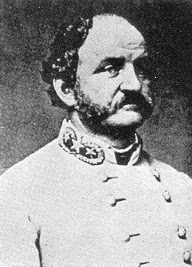
Under President James K. Polk the United States had a belief in “manifest destiny” to expand westward across the land. This idea came into conflict with the militarily divided Mexico at the Rio Grande on April 25, 1846. A Mexican cavalry attacked a group of U.S. soldiers in a disputed military zone. This act led to war.
Hearing the call of duty, Williams served in the Mexican-American War. His first assignment was as a captain of the independent company that would be attached to the 6th U.S. Infantry.
He would then serve as a colonel of the Fourth Regiment of the Kentucky Volunteers. Because of his bravery in the Battle of Cerro Gordo, he earned the nickname “Cerro Gordo Williams”. Cerro Gordo is a mountain pass in the Eastern Mexico region between Veracruz and Jalapa and was a turning point in the war.
Two Terms of Office with the Kentucky State House of Representatives 1851 and 1853

Returning from the war, Williams served in the Kentucky House of Representatives from 1851-1853 as a Democrat. He was initially opposed to the idea of secession. However, he also did strongly believe in states rights to govern.
Representative Williams strongly disagreed with President Abraham Lincoln’s policies and so he began supporting the Confederacy. In November of 1861, Williams traveled to Prestonsburg, Kentucky and enlisted in the Confederate Army.
5th Kentucky Infantry 1861-1862

When the Civil War began, Williams was commissioned as a Colonel of the 5th Kentucky Infantry and served under General Humphrey Marshall in Southwestern Virginia.
In 1861, the Confederate States Army under the command of Colonel John S. Williams took control of Pound Gap. Confederate State troops maintained large camps on both sides of the Pound Gap on March 16, 1862.
In the Fall of 1862, Williams participated in Marshall’s ill-fated invasion of Eastern Kentucky. However, Williams would continue to fight with Marshall and they won a victory at the Battle of Princeton Court House. Marshall would resign this post and was sent to eastern Tennessee.
While in Tennessee, William’s brigade fought under the command of William W. Loring. His brigade fought skirmishes at Fayetteville through Charleston. John Echols replaced Loring as the commanding officer as Loring was transferred to Mississippi.
Brigadier General
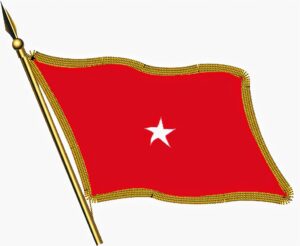
Williams received a promotion in the Spring of 1863 to brigadier general and took command of the Department of Southwestern Virginia replacing the command of John Echols. He then established a base in Saltville, Virginia and organized a brigade cavalry.
In the Fall of 1863, Williams met and would help resist Ambrose Burnside’s invasion as they tried to advance into Eastern Tennessee. The Battle of Blue Springs would be fought on October 10, 1863 and the Battle of Henderson’s Mill would be fought on November 14, 1863. There would also be several other skirmishes to resist Burnside and his men.
Resignation and Victories
Because of the losses that he was sustaining, Williams resigned his position as Brigadier General. He went to Georgia and joined and assumed command of the Kentucky forces from Joseph Wheeler in June 1864. There he was to fight against Sherman. His participation led to the occupation of Sherman in Atlanta, Georgia.
His leadership played a significant role as the Confederates would win a victory at Saltville, Virginia in the Fall of 1864. Because of the victory at Saltville, Williams received a resolution of gratitude from the Second Confederate Congress in the Fall of 1864.
Surrender and Return to Civilian Life
After the surrender of Lee in 1865, Williams also surrendered. Williams returned to Winchester, Kentucky where he had a farm. He remained at his home for 8 years pursuing agricultural pursuits.
Return To Politics

Williams returned to the political theater in 1873 with his next term in office in the Kentucky State Representatives. He would serve two terms with his last starting in 1875.
Williams then ran for the office of Governor of Kentucky in 1875 but was unsuccessful. The following year he was a presidential elector on the Democrat ticket.
From March 4, 1879 to March 3, 1885, Williams was elected to the United States Senate. He lost his re-election bid for the office.
Other Pursuits
John Williams became partners with the publisher of the Louisville Courier-Journal, Walter N. Haldeman, in the late 1880s. Together they became involved in land development in Florida and would establish the town of Naples, Florida.
Death
John Williams would die in Mount Sterling on July 17, 1898 at the age of 80. He was interred in Winchester Cemetery in Winchester, Kentucky with the Holloway family.
Thank You
Thank you for reading our post about Colonel John Stuart Williams. We thank you for continuing to support Kentucky Tennessee Living. As we bring to you the history of the Appalachian Mountains.
Sources and Further Reading
Pound Gap Civil War Memorial
http://kytnliving.com/poundgapcivilwarmemorial/?fbclid=IwAR1EHsr753e0dh809l1ETrqkj57x10HS8rV1SwulSFkf3OSyHsGrZV_cwMY
The Battle of Pound Gap
March 16, 1862
Facebook Post March 16, 2016 Kentucky Tennessee Living
Pound Gap ~~ there is more than meets the eye.
February 10, 2021
Facebook Post Kentucky Tennessee Living
Colonel John S. Williams of the 5th Kentucky
https://www.oocities.org/rlperry.geo/GeneralJohnSWilliamsPage.html
5th Kentucky Volunteer Infantry
https://5thkentuckyinfantry.wordpress.com/history/
John Stuart WILLIAMS, Congress, KY (1818-1898)
https://www.infoplease.com/biographies/government-politics/john-stuart-williams-ky
John Stuart Williams
https://www.findagrave.com/memorial/8951/john-stuart-williams
John Stuart Williams
https://military-history.fandom.com/wiki/John_Stuart_Williams
THE BATTLE AT PIKETON.; OFFICIAL REPORT OT JOHN S. WILLIAMS, COLONEL COMMANDING.
https://www.nytimes.com/1862/03/02/archives/the-battle-at-piketon-official-report-ot-john-s-williams-colonel.html
John Stuart Williams
https://en.wikipedia.org/wiki/John_Stuart_Williams
Colonel John Stuart Williams of the 5th Kentucky
https://www.oocities.org/rlperry.geo/GeneralJohnSWilliamsPage.html
Mexican-American War
https://www.history.com/topics/mexican-american-war/mexican-american-war
Copyright and Other Information
All photos are in the public domain unless otherwise noted. This includes photos dated before 1923. All other photos are used with permission or under the education fair use statute of the US copyright law.
Copyright 2022 Kentucky Tennessee Living
Social Media Pages
For more about us, you can visit our Facebook page:
https://www.facebook.com/kytnliving
Our Twitter page:
https://www.twitter.com/KYTNLiving
Our YouTube Channel:
https://www.youtube.com/kytnliving
When we forget our past and who we are as a people, then we become who “they” say we are. ~~ David Sergent
I have attended the University of Kentucky. I have an Associates Degree from Hazard Community College and Technical School. I have also attended the University of Pikeville. I have taken several classes in Journalism as well as in the Appalachian History, Literature, and Sociology during my time at those schools.
I was born in Florida and grew up in Burdine, Kentucky. I have been married to David W. Sergent since May 4, 2013. I have two children and four grandchildren from a previous marriage. I currently live in Tennessee but my hope is to one day come back home to live in the beautiful mountains once more.


